At all three of Shapiro's speeches, he stated the 1996 Cultural Olympiad exhibition "Rings: Five Passions of World Art" -- which the High presented during Atlanta's Olympics -- marked a major milestone and critical turning point (for the better) for the Southeast's premier museum of art.
Shapiro's and his peer's remarks echo in news reports and in general Atlanta arts conversations; it seems that most people agree that "Rings" put the High on the map of art museums with which to be reckoned.
Given this summer's 20th anniversary for both Atlanta's Games and the High's main ascension point, I thought for certain a commemoration might take place in step with next week's party for all things Olympic in Atlanta.
And when the museum announced "Out of the Box: The Rise of the Sneaker Culture" as this summer's main exhibition, an Olympic or "Rings" commemoration seemed even closer to "shoe-in" status.
Sadly, upon finally visiting the exhibition yesterday, the certainty unlaced.
And the museum's lack of promotion for the exhibition's many five-ringed connections seems like a big-time missed opportunity (insert grating, high-pitched squeaks of rubber smudging basketball courts here).
And the museum's lack of promotion for the exhibition's many five-ringed connections seems like a big-time missed opportunity (insert grating, high-pitched squeaks of rubber smudging basketball courts here).
Before shoehorning the good parts of "The Rise of Sneaker Culture" below, it's worth mentioning the lack of Olympic promotion rests not entirely at the High's feet.
The exhibition is on tour, arriving from its source curators of the Bata Shoe Museum in Toronto by way of the first U.S. presentation at The Brooklyn Museum in New York last fall, and a winter stop at Ohio's Toledo Museum of Art.
 Much of the exhibition's content -- such as a 256-page catalog or the wall text (in this exhibition, at the toe or heel of each shoe's display space in horizontal glass cases) -- was written by non-Atlantans with less knowledge of Georgia's capital or the High's Olympic legacies.
Much of the exhibition's content -- such as a 256-page catalog or the wall text (in this exhibition, at the toe or heel of each shoe's display space in horizontal glass cases) -- was written by non-Atlantans with less knowledge of Georgia's capital or the High's Olympic legacies.
Though the catalog is beautiful and chock-full of interesting facts, figures, specially-written contributions and gorgeous photos, the Olympic notes are riddled with copy errors.
Specifically, on page 79 the section author, Bata Shoe Museum Senior Curator Elizabeth Semmelhack, incorrectly referenced "Gold medalist Heinz Fütterer ran in Pumas at the 1954 Olympics" (Fütterer golds were earned at the world championships in 1954, a non-Olympic year, and he won a team relay bronze at Melbourne's 1956 Olympiad).
 More surprising: Beside of color photo of Mexico City Olympians Tommie Smith and John Carlos barefoot on the medal stand beside their suede Pumas, the author incorrectly reports that "At the medal ceremony, both athletes too off their black Suedes"
More surprising: Beside of color photo of Mexico City Olympians Tommie Smith and John Carlos barefoot on the medal stand beside their suede Pumas, the author incorrectly reports that "At the medal ceremony, both athletes too off their black Suedes"
Somewhere, Elvis is joining me in musically admonishing Semmelhack because the photo has "blue, blue, blue suede shoes, baby!"
In the High, there's no mention of Smith nor Carlos and their iconic Olympic moment. Rather, the Suede Puma sample appears beside an signed orange version with the autograph of Atlanta-born NBA star Walt "Clyde" Frazier. Unmentioned in the catalog and exhibition: In 2008, Smith reportedly gave one of his 1968 Pumas to Usain Bolt as a birthday gift.
In the High, there's no mention of Smith nor Carlos and their iconic Olympic moment. Rather, the Suede Puma sample appears beside an signed orange version with the autograph of Atlanta-born NBA star Walt "Clyde" Frazier. Unmentioned in the catalog and exhibition: In 2008, Smith reportedly gave one of his 1968 Pumas to Usain Bolt as a birthday gift.
The catalog copy errors hop over to page 218 with a reference to "Mohammad Ali" (it's Muhammad, thank u) as the inspiration for a rare Adidas sneaker design.
Skip back to page 54 for a reference to Jesse Owens as "the winningest Olympian" up to 1936 (Finland's Paavo Nurmi won nine gold medals from 1920 to 1928).
Jump to the same page photo cutline to find it erroneously states Owens was "the first athlete to receive four gold medals in the Olympic Games" (Nurmi earned five golds at Paris in 1924). Does the researcher for this section still have a job?
Fortunately, here's what the exhibition gets right:
-- Display of a 1936 shoe like those presented to Owens in Berlin by Adolf "Adi" Dassler, founder of Adidas and brother of Puma founder Rudolph Dassler; I noticed more visitors stopped to study this shoe in detail, and one person even remembered the shoe scene depicted in the recent Owens biopic "Race"
-- Showcase of the aforementioned 1968 Puma blue Suede style akin to what Team USA gave Smith and Carlos in Mexico City. This shoe really does look cool
-- Numerous Nike and Air Jordan brand shoes donned by Michael Jordan just after his 1984 Olympic debut and later when he played for the Dream Team in 1992
-- Michael Johnson's gold Nike track spikes tailored to his specifications (one is a half-size larger than the other), worn at Atlanta Olympic Stadium 20 years ago
-- Numerous other designs celebrating and mentioning Olympic basketball players Patrick Ewing (1984, 1992), Shaquille O'Neal (1996), Danny Manning (1988) and LeBron James (2004, 2008, 2012). But when you're looking at James' comical and colorful Stewie Griffin LeBron IV sneakers by Nike, don't expect to find mention of the player's 2016 MVP status for the Cleveland Cavaliers.
-- Gold Puma X Undefeated Clyde Gametime Gold sneakers honoring 2012 Olympic basketball at London.
-- In the non-Olympic realm, I enjoyed the Roy Lichtenstein-inspired design, original Onitsuka Tiger Tai Chi lace-ups like those worn by Bruce Lee and Uma Thurman, Damien Hirst's contributions for a pair of Converse X, and a pair of rubber "overshoes" from Brazil circa the 1830s.
-- There's not an exhibition-specific app, but the museum presents some interesting video content about select shoes via the site SneakerHigh.org. The Owens footage is interesting, as is the No. 1 video regarding the anniversary of Reebok Pump Fury celebrated a few years ago.
-- There's not an exhibition-specific app, but the museum presents some interesting video content about select shoes via the site SneakerHigh.org. The Owens footage is interesting, as is the No. 1 video regarding the anniversary of Reebok Pump Fury celebrated a few years ago.
I do think that with so many shoes tied directly to the 1996 Atlanta Games, the High could or should have laced up some promotions, an infographic for sports fans, or an invitation for Johnson to revisit his donated gold shoes.
The Brazilian shoes from 1830 even provide a potential shoe box feature tied to the Rio 2016 Olympics -- imagine, safety from rubbers!
With several Atlanta-based gold medalists such as current Wheaties box athletics champion Edwin Moses, NBA player and Olympian Dwight Howard, or high jumper Chaunté Lowe nearby, why not engage them for their footnotes on Olympic shoes?
Most of the sneakers are presented in one large gallery, with a smaller side gallery showcasing the more historic (translation: older) designs spanning the mid-1800s to the 1960s. Each shoe rests in place, so it's not possible to peer at every angle unless a design happens to be placed at a glass case end cap.
Suggestion for future shoe exhibitions: Place the objets d'art atop motorized Lazy Susans for a fresh spin of the moccasin.
The bottom line: For readers considering museum options, "Out of the Box: The Rise of Sneaker Culture" is worth visiting for its wealth of shoe artistry. Ruminating on its potential for Atlanta Olympic ties for more than a year, I could not help but be disappointed on that front, but the sneakers on view do fill in many interesting footnotes on history.
With that said, I haven't been this perplexed/disappointed by a High exhibition since they mounted a 2011 assemblage titled "The Art of Golf" whose curator obliviously left out the two most influential modern golf and sports artists, Leroy Neiman and Bart Forbes, perhaps another example (prior to Bata's catalog researcher and copy editor errors) when curators jumped for "sports meets arts" but only tossed a brick or air ball.
With that said, I haven't been this perplexed/disappointed by a High exhibition since they mounted a 2011 assemblage titled "The Art of Golf" whose curator obliviously left out the two most influential modern golf and sports artists, Leroy Neiman and Bart Forbes, perhaps another example (prior to Bata's catalog researcher and copy editor errors) when curators jumped for "sports meets arts" but only tossed a brick or air ball.
"The Rise of Sneaker Culture" remains on view at the High though Aug. 11 before it stumbles into the Speed Art Museum in Louisville, Ky. Maybe while in "The Greatest" Ali's hometown they'll get the spelling right for Muhammad.
Images via High.org and Bata Shoe Museum; Olympic photo credit TBD.



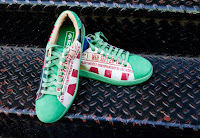










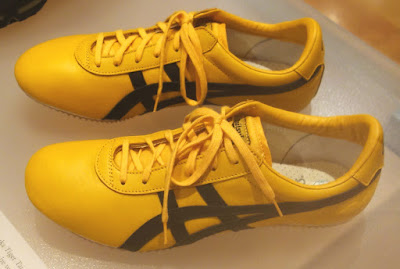

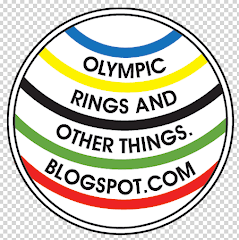
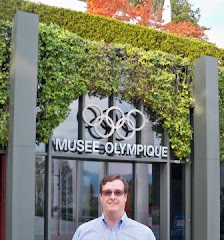
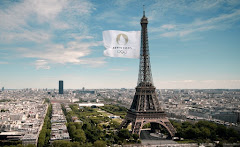






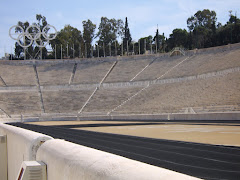


No comments:
Post a Comment